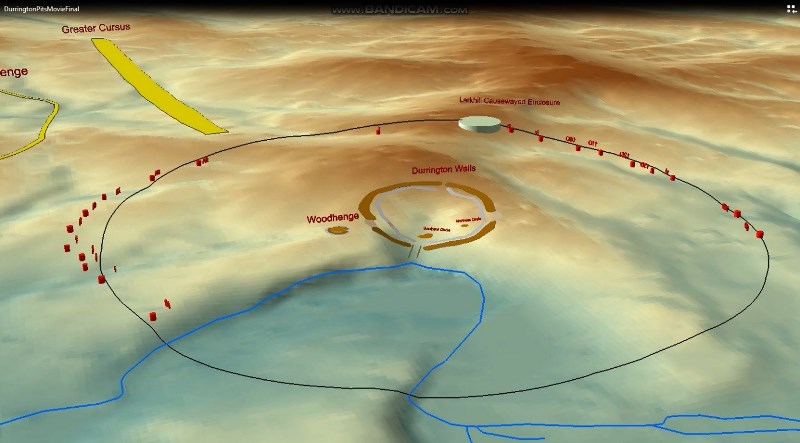Massive circle of prehistoric shafts discovered near Stonehenge
Stonehenge may be one of the best-known archaeological sites on earth, but a team of archaeologists are celebrating the discovery of a major new prehistoric monument only a short distance away from Stonehenge. Recent fieldwork and analysis have revealed evidence for 20 or more massive, prehistoric shafts, measuring more than 10 metres in diameter and 5 metres deep. These shafts form a circle more than 2 kilometres in diameter and enclose an area greater than 3 square kilometres around the Durrington Walls henge, one of Britain’s largest henge monuments, and the famous, smaller prehistoric circle at Woodhenge.

The "Stonehenge Hidden Landscape Project"
Stonehenge occupies one of the richest archaeological landscapes in the world, recorded in the course of intensive archaeological and antiquarian research over several hundred years, yet much of this landscape effectively remains terra incognita. This project aims to address gaps in our knowledge and to advance the understanding of the Stonehenge landscape by conducting a cutting-edge geophysical and remote sensing survey at unprecedented scale.
The results of the proposed work will be used to create a highly detailed archaeological map of the 'invisible' landscape, providing the basis for a full interpretative synthesis of all existing remote sensing and geophysical data from the study area, For the first it will thus be possible to create total digital models of the Stonehenge landscape at a true 'landscape scale' that will not only transcend the immediate surrounds of individual monuments within the study area, but will also tie them together within a seamless map of sub-surface and surface archaeological features and structures.
The Stonehenge Hidden Landscapes Project, led by the University of Birmingham in conjunction with the Ludwig Boltzmann Institute for Archaeological Prospection and Virtual Archaeology, is the largest project of its kind.
The Stonehenge Hidden Landscapes Project is a collaboration between the University of Birmingham, the Ludwig Boltzmann Institute for Archaeological Prospection and Virtual Archaeology, Vienna and its international partners, the University of Bradford, the University of St Andrews, and the 'ORBit' Research Group of the Department of Soil Management at the University of Ghent, Belgium.
The project operates under the auspices of the National Trust and English Heritage.














